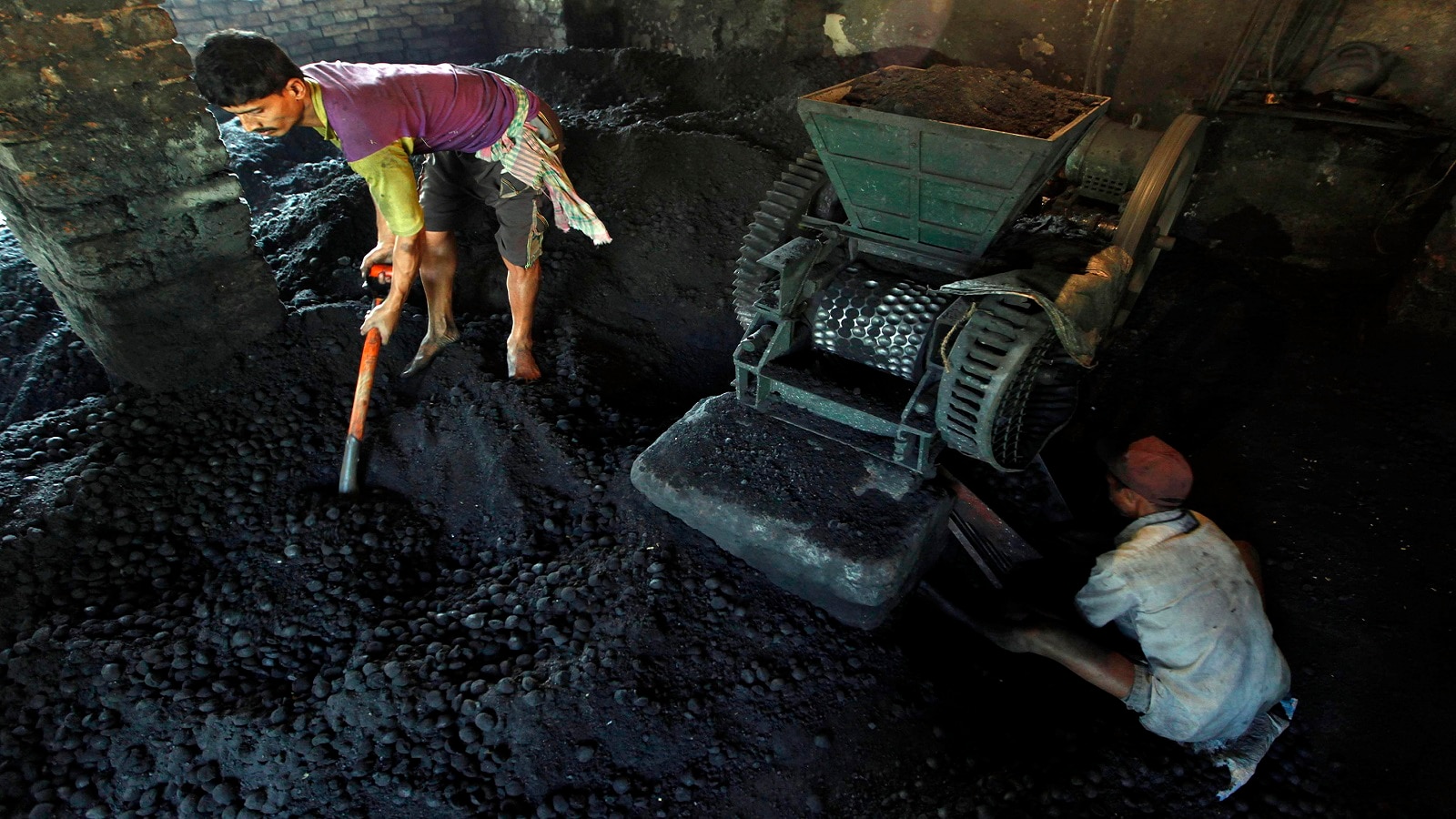Outlook for Indian market remains positive, says Fiera Capital

KV Prasad Jun 13, 2022, 06:35 AM IST (Published)
 Listen to the Article (6 Minutes)
Listen to the Article (6 Minutes)
Summary
Julian Mayo of Fiera Capital said the overall outlook for the Indian economy remains relatively positive. Speaking about emerging markets he said, “There is a bit of uncertainty going on at the moment as you said surrounding the dollar and some of the external imbalances of some other emerging markets but overall the outlook is …
Continue reading “Outlook for Indian market remains positive, says Fiera Capital”
Julian Mayo of Fiera Capital said the overall outlook for the Indian economy remains relatively positive. Speaking about emerging markets he said, “There is a bit of uncertainty going on at the moment as you said surrounding the dollar and some of the external imbalances of some other emerging markets but overall the outlook is still relatively positive because you have got positive earnings growth momentum in emerging markets.”
“You had a growth recession between 2011 and 2015 in the assets class, you have two years of a recovery of that but the trend is still positive there. Corporate profit outlook is still good at moment. You had a big spike in profits last year after profits recession over the previous 4-5 years. Our outlook continues to be good double digit growth across the asset class for this year and probably into next year as well,” he added.
Watch here: Outlook on Indian economy still positive, says Julian Mayo
Edited Excerpt:
Q: You have been an emerging market (EM) specialist for a long time. As an EM specialist how do you see things right now given that there has been a little bit of consternation off late with the dollar regaining some strength? Do you see the second half of 2018 being strong for EMs?
A: There is a bit of uncertainty going on at the moment as you said surrounding the dollar and some of the external imbalances of some other emerging markets but overall the outlook is still relatively positive because you have got positive earnings growth momentum in emerging markets.
You had a growth recession between 2011 and 2015 in the assets class, you have two years of a recovery of that but the trend is still positively there.
Corporate profit outlook is still good at moment. You had a big spike in profits last year after profits recession over the previous 4-5 years.
Our outlook continues to be good double digit growth across the asset class for this year and probably into next year as well.
Secondly, you have pockets of instability within emerging market currencies but for the bigger emerging market currencies and I am talking here about China, Korea, Taiwan and India which are the four countries that make up two thirds or so of emerging markets benchmark, I think the currencies are in reasonably good shape.
So, overall emerging market currencies are undervalued. At the moment the dollar is strong but it is not as if you have got dollar strength versus emerging-market weakness in a polarised basis, that you sometimes have across emerging markets.
What you have at the moment is, you have dollar strength against all currencies, against the euro as well and almost the main driver of this is the relative performance of the US economy against the euro zone economy – one of which seems to be accelerating and the other seems to be slowing down a bit and therefore possibility of rates increases in the US and that is pulling the dollar up against the euro.
So, as an asset class emerging market currencies are falling because of more of a collateral damage reasons than for emerging market specific reasons with one or two exceptions.
Q: Do you see this current bout of strength in the dollar as a durable trend?
A: We are not dollar specialists but the one observation I would make is that if you look at emerging markets over a 30 year period or so, when you have periods of dollar strength or rather of US monetary tightening, the dollar often rises in advance of a spell of monetary tightening in the US and this is very much what happened in the 2013-2016 period.
Then the dollar either treads water or even sells off after the rate hike increases. So, I think it is really more a question of how much rates are going to go up in the US?
The downside risk for emerging market and the upside risk for the dollar is that the rates go up by more than the market thinks they are going to. However I don’t see any evidence of that happening.
So, as a non-dollar specialist, I would say the dollar doesn’t necessarily look as if it is going to rise a lot further certainly against emerging market currencies because emerging market currencies are supported by strong real interest rates and relatively strong fundamentals.
Q: How difficult or easy do you find raising money for emerging market equities now because the flip side is that the US is doing very well as well and that is always the big competing asset class? In the face of such strong performance in the US is it easy to tell people that you can make a little bit more in emerging markets, give us some more money?
A: The short answer to that is no, it is not easy. We have had 5 years up until 2016 of very strong outperformance of the US against emerging markets. I think the US market was up close to 50% over the 5 years, before that the EM was down by 25% or so – you had massive bifurcation of performance mainly justified by fundamentals because your currencies were overvalued before and because earnings growth has been much better in the US than in emerging markets. However that has changed a little bit and so what has happened is that you have got some investors who are in the short term they don’t want to be out of the dollar because it is going up at the moment but in the long term they recognise that we have had this extended 5 year cycle, we are probably only 2 years into the reverse of that. If you look over a 30 year or so period you have these extended cycles of emerging markets outperforming and underperforming the US and other developed markets.
So, as emerging markets prove themselves to be more stable, then that will encourage investors to put money into emerging markets at this stage.
Q: Are you convinced that this is a five-six year kind of a sweet spot for emerging markets, a cycle in that sense?
A: Yes, I do. I mean we are probably into it but nonetheless. I think we are in a correction in that overall five year cycle because I do think you have got improving fundamental and valuation differential between emerging and developed markets. Emerging markets and US in particular is still close to an all-time high. Yes, of course you have got one time earning boost in the US from the tax cuts and you have got fiscal stimulation. There is a short-term boost to the US economy which encourages people into dollar and into the asset class there but overall you have got a better structural and long-term outlook for emerging markets.
Q: What about liquidity though because as central banks begin to draw down. The process has started. How do you think emerging markets will cope with far reduced or far lower liquidity in the world?
A: I think in terms of international flows there is definitely an impact. So the reduction of the rate of increase, if you like, of liquidity into capital markets as a whole is clearly going to affect the prices of all assets whether its US fixed income or global equities or emerging market equities or emerging market fixed income. So you have to paraphrase in the economic expression if you are looking between income effect and substitution effect. And the income effect is definitely a pool of global liquidity not growing at the same rate as it has been over the last seven-eight years in the quantitative easing (QE) era.
On the other hand there are two things to bear in mind. First, the liquidity from the domestic perspective isn’t changed very much because these economies didn’t have QE in the first place. There isn’t the need to withdraw stimulation from these economies because they weren’t being stimulated in the first place. Second, if you move on to substitution effect, what I think is happening is there is substitution argument globally away from fixed income into equity because growth is accelerating and if growth accelerates you want to be where the growth is rather than in the fixed income component and for the fundamental reasons that I said otherwise beforehand, the move from developed into emerging markets. I think these two things are slightly playing against each other and in the short-term the overall reduction of liquidity or perceived reduction of liquidity is what is winning but over the medium-term that just started to reassess itself in terms of flows into emerging markets but within emerging markets it augurs from for taking money out of EM debt and into EM equity.
Q: The other thing which has happened this year is that crude has surprised people. It’s gone to USD 75/bbl. People are talking about USD 80-90/USD once again. Has that changed your view of your preferred destinations in emerging markets? Have you had to reallocate your portfolio in a sense?
A: At the margin yes, we have. It had a bit of an impact in terms of winners and losers. In my view one of the biggest myth about emerging markets is the relationship with commodities in general and oil in particular because people think if oil price goes up it must hit emerging markets but we think very simplistically. As I said earlier the four countries I referred to earlier – Korea, China, Taiwan and India – the four biggest market. Three course of the benchmark; all of them are of course oil importers and commodity importers and there is no way on earth they can benefit from what affects your tax on manufacturing cost or consumption directly and if you look at the number of emerging markets that are benefiting from higher oil prices its only really Russia, Columbia, UAE and Qatar, four countries but these four countries account for 5-6 percent of a benchmark. So the other 94 percent is obviously more important.
In the middle you have got countries which have previously been regarded as benefiting from higher oil prices but someone like Mexico for example, it used to be a net oil exporter. Now it’s an oil importer. Malaysia, Indonesia, Brazil, they are in the middle, they are somewhere, but if we take those four medium size emerging markets out of the equation you still got 18 percent plus of asset class losing.
So definitely the rise in the oil price is a headwind. I think the causality in the sense of the relationship is actually the reverse. So in the sense what is happening is that one of the reasons the oil prices rising is precisely because demand is increasing and of course there is politics on the supply side and most commodity analysts will spend 90 percent of discussion talking about the supply side and geopolitics and other, but I think the demand side, it may not be 50 percent but it is certainly more in 10 percent which people talk about. So in a sense the rise in the oil price is a good thing because it reflects improved global demand but of course to extent there is a supply issue at the moment and there clearly is then the margin that is negative for the asset class.
Q: In that light we worry a lot about oil prices in India. Does India become underweight in your book in emerging market universe?
A: No I would say still it becomes a margin possibly lesser than overweight. I think the India market struggled recently relative to some of the other markets. Valuation still look reasonable but it is definitely a headwind facing India at the moment but again that is partly reflection and the fact that you will see the rupee being relatively weak and I think that is partly reflection of the rise in the oil price.
Q: You are not just an emerging market specialist, I believe you are also a smallcap specialist, you do own a lot of smallcap stocks, in a stock picking sense how do you look at markets like India?
A: We do invest in smallish companies. I wouldn’t say – we are certainly not smallcap specialist so our capitalisation cut off is around billion dollars. So we look at companies in trading USD 2-3 million a day at least in terms of average daily trading volumes but nonetheless it doesn’t mean that we are investing below the bigcap spectrum and say that kind of USD 1-10 billion area is often where we find some of our best ideas.
But these are bottom-up stock picks where you have to do that extra little bit more work in terms of research but often these companies will be stock specific companies. So they are tied in a sense to the long-term direction of growth in the economies, which we are investing but they are not macro plays per se, it is not like buying a large bank or a big commodity company or someone like Samsung in Korea, so you are looking at something which was somewhat more idiosyncratic if you like.
Q: What worries you about your hypothesis that we are in a five-six year cycle, two years into such a cycle in emerging markets, what would make you change that hypothesis?
A: The main thing is the dollar and I think it is a dollar which has strengthened against everything. If we see the dollar gain up strongly against the Korean won or the renminbi or something like that then that would be a concern for us because that would tell us that – why would that happen? If you desegregate what in theory should matter for currencies, which are basically the real interest rate differential, so you get effectively four variables, US rates in normal terms, US inflation, emerging market in normal rates and emerging market inflation. So how could that be derailed? One of them of course is emerging market inflation rising rapidly and so therefore, rates either have to go up which is going to slow growth down or if they don’t, it means your interest rate differential is reduced or even turns negative. So that would certainly be worrying for us if that would happen.
But we don’t see any strong evidence of a big increase in inflation across the emerging world partly because monetary policy has been relatively orthodox as I said earlier within most emerging markets. The other point, the flip side of that of course is – just as an observation – obviously rates are going up in normal terms in the US but inflationary pressure at the margin is greater in the US. So therefore, real rates in the US are not rising significantly. So therefore, I would argue that – why would that necessarily be dollar supportive in the longer run? So I would say certainly, relative inflation would be a problem from a hypothesis perspective.
Q: What is a greater threat because people are freighting, investors do freight about inflation in a bigger way, the US interest rate is already at 3 percent but there are some people, a minority who believe that maybe it will end differently with the growth rolling over because we are already maybe 8-9 years into a growth cycle in the US, do you think it is likely that it is not inflation but growth which becomes a scare, maybe 6-9 months down the line?
A: I think there is. I think at the moment, it seems the evidence is from both the capital goods markets but also from the labour market that the risk is – the growth if you like surprises on the upside and therefore that would be more inflationary. That I think it is the greater risk and the risk that rates hiked by more than the market thinks that they are going to hike them, I will say that is probably the main risk. The risk of a rollover in growth sooner rather than later seems to me to be relatively remote.
Q: What about trade wars? I know the market is breathing a little easier right now than it was three-four months back but do you think that could become an issue or is it mostly in your eyes a China specific one now?
A: I think to the extent it is an issue that is China specific. This is definitely a risk kind of globally because you got these two largest economies in the world at loggerheads but they are talking to each other and I think they recognize that – I don’t think anybody seriously believes in Donald Trump’s take that trade wars are good and they are easy to win whatever his expression was then I don’t think anyone is going to win if there is a significant trade war.
So I see calmer heads prevailing in this particular debate and you end up with some sort of a resolution – the last time there is a significant global trade war between the two leading economies of the time was Japan in the late 1980s. At that time I was actually living in Japan and these things – I don’t think it is going to end quite as badly as some people think.
Q: Is that hope or conviction?
A: It is a combination of both. It is conviction based on calmer heads and common sense prevailing but with this administration you cannot really tell.
Q: India off late people are started talking about micro versus macro, would you say that it is true of the emerging market spectrum as well?
A: I think there are two signs that the macro determines your cost of equity, how expensive should a stock be, where it should trade, what are the risks to the valuation and so, I think in the case of India, there has been this feeling that it is a good long-term story, you have got a good long-term growth story in India to invest.
The disappointment in for example in India has been at the micro level. The performance of stock and ultimately the stock market is a market of stocks and the performance of the individual companies aggregate is what makes the market where it is and so when you have a market where – someone like India, you have got potential growth of 7-8 percent, so whatever the actual number is, plus 3 percent inflation, you should be getting companies growing at a multiple of nominal in terms of bottomline at least higher than nominal GDP in the short-term, you should have the better companies to be growing their profits by 15 percent.
The actual behaviour – the corporate profit behaviour even in the last couple of years when profits would be recovering generally across emerging markets has not been good enough. So we look at India – as we like the businesses, we like the macro but we are frustrated in many cases by what is happening at the micro level. So I think the point you mentioned earlier about a recovery in improving micro is good thing. What you want to see is costs are under control, in a topline growth you want to see companies taking market share and so on.

Elon Musk forms several ‘X Holdings’ companies to fund potential Twitter buyout
3 Mins Read
Thursday’s filing dispelled some doubts, though Musk still has work to do. He and his advisers will spend the coming days vetting potential investors for the equity portion of his offer, according to people familiar with the matter

KV Prasad Journo follow politics, process in Parliament and US Congress. Former Congressional APSA-Fulbright Fellow










 Listen to the Article
Listen to the Article  Daily Newsletter
Daily Newsletter













